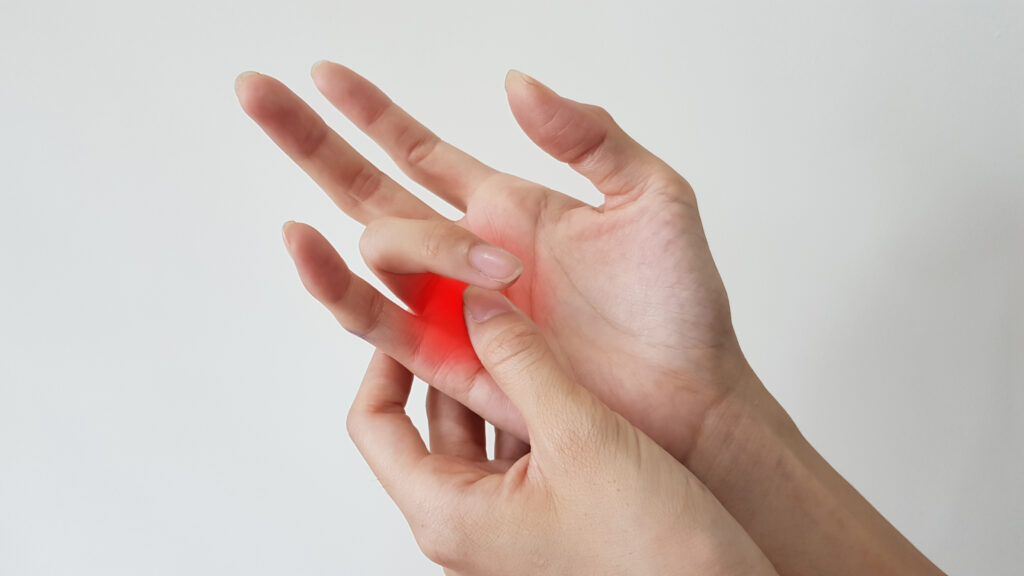Trigger finger or stenosing tenosynovitis is a condition that affects the thumb or fingers, sticking them in a fixed bent or straight position. Read on to learn what causes trigger finger and how to deal with the condition.
The condition is the result of inflammation of the tendon sheath in the finger joints. This prevents the tendon from sliding smoothly through the finger ligaments, making it challenging to move the affected finger or thumb. You might feel a snap in the joint when you try to straighten or bend the affected finger or thumb.
What is Trigger Finger?
Trigger finger is a condition where your finger or thumb is stuck in a bent position because the tendon responsible for finger movement gets stuck in the first annular ligament known as the A1 pulley.
This ligament interacts with the tendon through the tenosynovium – a sheath lining the tendon. The sheath reduces friction between the tendon and pulley, allowing it to move smoothly.
However, sometimes repeated movement and other factors cause inflammation of the tendon sheath, making it difficult for the tendon to slide through the A1 pulley. Your finger might become permanently bent if the inflammation doesn’t go down.

What Causes Trigger Finger?
Trigger finger is the result of an inflamed, scarred or abnormally thickened tendon sheath in the finger or thumb. Inflammation and scarring can cause the tendon to thicken and swell, making it more challenging to slide through the pulley.
The A1 pulley’s gliding surface can also become inflamed when irritated by the scarred sheath. This makes finger and thumb movement stiffer and more painful.
So, what causes trigger finger?
Repetitive manual activities
Activities that involve using power tools can cause trigger finger because they require you to grip the machine tightly. As a result, you overuse the tendon and pulley, causing inflammation and interfering with finger movement.
In addition, these machines send powerful vibrations through the fingers, affecting the tendon sheath’s contact with the A1 pulley.
Playing musical instruments also involves a lot of hand movement. If you practice or play too much, you might develop trigger finger.
Medical conditions
Some diseases and conditions contribute to developing trigger finger. For example, rheumatoid arthritis causes pain and stiffness in joints. Furthermore, people suffering from diabetes mellitus are at risk of developing trigger finger.
Other at-risk conditions include gout, tuberculosis, amyloidosis and thyroid issues like hypothyroidism.
Trigger Finger Treatment at The Harley Clinic
Your doctor will recommend how to release a stuck trigger finger, depending on the severity of the condition.
Trigger finger treatment options include:
- Hand therapy exercises
- Corticosteroid injection into the tendon sheath
- Bracing the finger or thumb with splints
- Non-steroidal anti-inflammatory drugs (NSAID) for pain relief
- Trigger finger release surgery
If you’re experiencing trigger finger and would like to discuss your treatment options, book a consultation with a specialist at The Harley Clinic.













